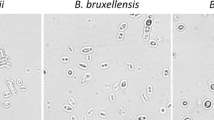Abstract
Saccharomyces cerevisiae is well-known in the baking and brewing industries and always used for the preparation of probiotics, especially its subtype, Saccharomyces boulardii, to prevent and treat various diarrhea and intestinal diseases. However, case reports on the side effects of a wide range of serious infections for the elderly, immunocompromised and critically ill patients after treatment with the S. cerevisiae have been increasing in recent years. The existing diagnose methods of the invasive S. cerevisiae infections in clinical, especially, the key step of the method—cell isolation, is time-consuming that always miss timey diagnose and early prevention. Here, we propose a new automatic micromanipulation method to label-free rapid isolation of S. cerevisiae based on the optically-induced dielectrophoresis (ODEP) technology, combining with image processing and recognition. S. cerevisiae is firstly identified by the image recognition method and then, automatically captured and moved to the target location by designing optical patterns. The results indicate the method can flexibly and automatically manipulate multiple S. cerevisiae cells simultaneously, such as, arranging S. cerevisiae cells, moving an array of the cells at any directions, aggregating the cells, and separating S. cerevisiae from the solution mixed with impurities. This work represents a step toward the use of automatic micromanipulation of ODEP technology to automatically and rapidly isolate S. cerevisiae for the detection of the invasive S. cerevisiae infections.







Similar content being viewed by others
References
S. Atıcı, A. Soysal, K. Karadeniz Cerit, Ş. Yılmaz, B. Aksu, G. Kıyan, M. Bakır, Medical Mycology Case Reports 15, 33 (2017)
A.G. Banerjee, S. Chowdhury, W. Losert, S.K. Gupta, IEEE Trans. Autom. Sci. Eng. 9, 669 (2012)
D.D. Byrne, A.C. Reboli, Current Clinical Microbiology Reports 4, 218 (2017)
P.Y. Chiou, A.T. Ohta, M.C. Wu, Nature 436, 370 (2005)
P.Y. Chu, C.H. Hsieh, C.R. Lin, M.H. Wu, Biosensors 10, (2020)
P.Y. Chu, C.J. Liao, C.H. Hsieh, H.M. Wang, W.P. Chou, P.H. Chen, M.H. Wu, Sens. Actuators B 283, 621 (2019)
M. Du, G. Li, Z. Wang, Y. Ge, F. Liu, Appl. Opt. 60, 2150 (2021)
H.L. Guo, Z.Y. Li, Science China: Physics. Mechanics and Astronomy 56, 2351 (2013)
E.A. Henslee, Electrophoresis 41, 1915 (2020)
S.H. Hung, S.C. Huang, G. bin Lee, Sensors (Switzerland) 13, 1965 (2013)
S. Hu, L. Cai, J. Lv, X. Jiang, Trans. Inst. Meas. Control. 42, 795 (2020)
X. Hu, P.H. Bessette, J. Qian, C.D. Meinhart, P.S. Daugherty, H.T. Soh, Marker-Specific Sorting of Rare Cells Using Dielectrophoresis (2005)
M.F. Landaburu, G.A. López Daneri, S. Relloso, L.J. Zarlenga, M.A. Vinante, M.T. Mujica, Rev. Argent. Microbiol. 52, 27 (2020)
B.H. Lapizco-Encinas, M. Rito-Palomares, Electrophoresis 28, 4521 (2007)
W. Liang, Y. Zhao, L. Liu, Y. Wang, Z. Dong, W. JungLi, G. bin Lee, X. Xiao, W. Zhang, PLoS ONE 9, (2014)
C.J. Liao, C.H. Hsieh, T.K. Chiu, Y.X. Zhu, H.M. Wang, F.C. Hung, W.P. Chou, M.H. Wu, Micromachines 9, (2018)
G. Li, M. Du, J. Yang, X. Luan, L. Liu, F. Liu, IEEE Sens. J. 21, 14627 (2021)
N. Liu, Y. Lin, Y. Peng, L. Xin, T. Yue, Y. Liu, C. Ru, S. Xie, L. Dong, H. Pu, H. Chen, W.J. Li, Y. Sun, IEEE Trans. Autom. Sci. Eng. 17, 1084 (2020)
A. Maleb, E. Sebbar, M. Frikh, S. Boubker, A. Moussaoui, A. el Mekkaoui, W. Khannoussi, G. Kharrasse, B. Belefquih, A. Lemnouer, Z. Ismaili, M. Elouennass, Journal De Mycologie Medicale 27, 266 (2017)
S.R. Sasikala R, A. Mangalam, G. Deepika, Res. J. Pharm. Biol. Chem. Sci. 8, 1505 (2017)
L.V. Mcfarland P. Bernasconi, Microb. Ecol. Health Dis. 6, 157 (1993)
A.T. Ohta, P.Y. Chiou, T.H. Han, J.C. Liao, U. Bhardwaj, E.R.B. McCabe, F. Yu, R. Sun, M.C. Wu, J. Microelectromech. Syst. 16, 491 (2007)
M. Padayachee, J. Visser, E. Viljoen, A. Musekiwa, R. Blaauw, South African Journal of Clinical Nutrition 32, 58 (2019)
P. Pais, V. Almeida, M. Yılmaz, M.C. Teixeira, Journal of Fungi 6, 1 (2020)
A. Pandey, Y. Gurbuz, V. Ozguz, J.H. Niazi, A. Qureshi, Biosens. Bioelectron. 91, 225 (2017)
Y.L. Qu, M.J. Zheng, W.F. Liang, Z.L. Dong, in Advanced Materials Research, pp. 842–847, (2012)
L. Shi, X. Shi, T. Zhou, Z. Liu, Z. Liu, S. Joo, Mod. Phys. Lett. B 34, (2020).
C. Souza Goebel, F. de Mattos Oliveira, L.C. Severo, Rev. Iberoam. Micol. 30, 205 (2013)
S. Tuukkanen, A. Kuzyk, J. Jussi Toppari, H. Häkkinen, V.P. Hytönen, E. Niskanen, M. Rinkiö, P. Törmä, Nanotechnology 18, (2007)
I. Ventoulis, T. Sarmourli, P. Amoiridou, P. Mantzana, M. Exindari, G. Gioula, T.A. Vyzantiadis, Journal of Fungi 6, 1 (2020)
H.Y. Wang, C.Y. Chen, P.Y. Chu, Y.X. Zhu, C.H. Hsieh, J.J. Lu, M.H. Wu, Sens Actuators B Chem. 307, (2020)
Y. Wu, D. Sun, W. Huang, N. Xi, IEEE/ASME Trans. Mechatron. 18, 706 (2013)
H. Zhang, K.K. Liu, J. R. Soc. Interface 5, 671 (2008)
M.J. Zheng, Y.L. Qu, Y.Z. Zhang, Z.L. Dong, Integr. Ferroelectr. 145, 24 (2013)
M. C. Zhong, X. bin Wei, J. H. Zhou, Z. Q. Wang, Y.M. Li, Nat. Commun. 4, (2013)
X. Zhu, H. Yi, Z. Ni, Biomicrofluidics 4, (2010)
Acknowledgements
This work was supported by the National Natural Science Foundation of China (Grant No. 61903157 and No. 61833007) and the Natural Science Foundation of Jiangsu Province of China (Grant No. BK20180592).
Author information
Authors and Affiliations
Corresponding author
Ethics declarations
Conflicts of interest
The authors declare no conflict of interest.
Additional information
Publisher's Note
Springer Nature remains neutral with regard to jurisdictional claims in published maps and institutional affiliations.
Rights and permissions
About this article
Cite this article
Ding, Z., Du, M., Liu, F. et al. Label-free rapid isolation of saccharomyces cerevisiae with optically induced dielectrophoresis-based automatic micromanipulation. Biomed Microdevices 23, 44 (2021). https://doi.org/10.1007/s10544-021-00582-z
Accepted:
Published:
DOI: https://doi.org/10.1007/s10544-021-00582-z




